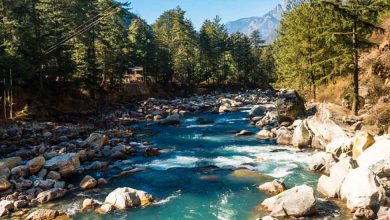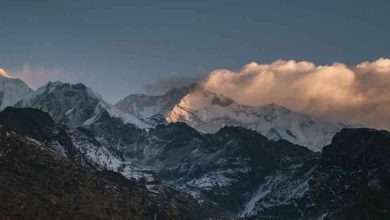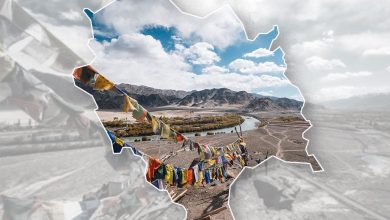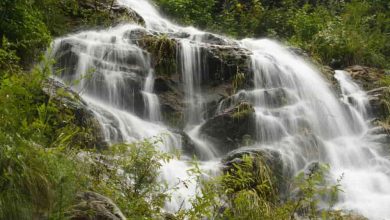People usually refer to the Masroor Temple as the Himalayan Rock-Cut Temple, Himalayan Pyramids and also the Ellora of the Himalayas. The mesmerising rock-cut structure of the Masroor Temple is not completely intact and some parts of it is in ruins. However, from what we can see of it, the advanced craftsmanship of our ancestors is evident in their efforts to make a 15-rock-cut monument complex from a single stone! What’s more? No one really knows who built this structure or how it came into existence.
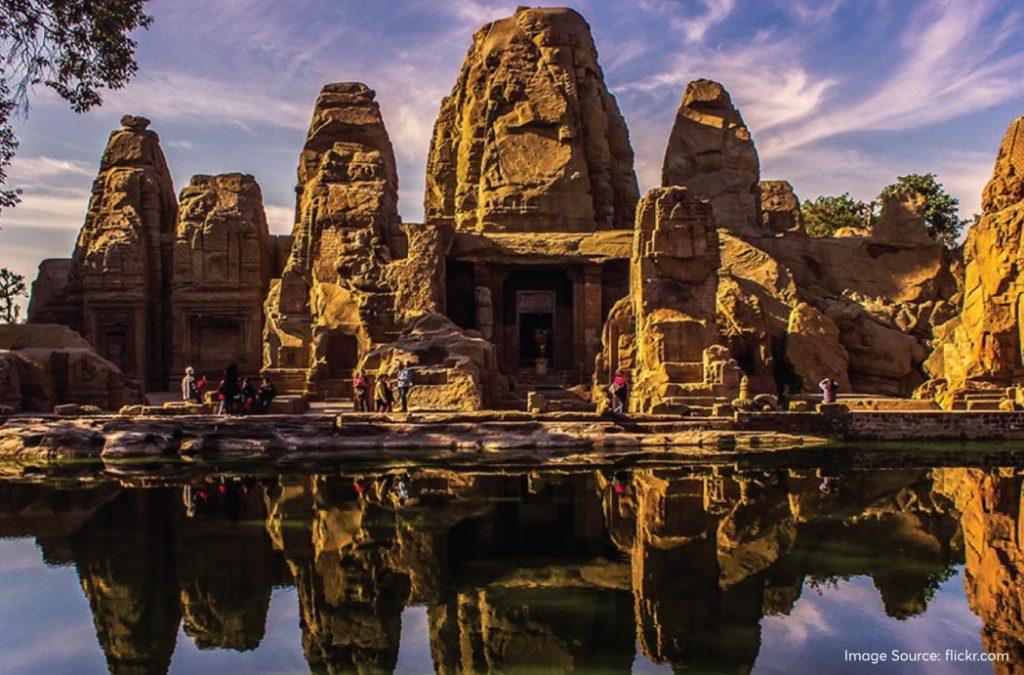
Here’s everything you need to know about the history of the Masroor Temple. Legends associated with it, the religious significance of the place, the architecture and more!
About Masroor Temple
The Masroor Temple is present in the Kangra Valley of Himachal Pradesh, close to the Dhauladhar mountain range. It stands in close proximity to the Beas River. The 15-monument temple complex resembles the Nagara temple architectural style and is dedicated to Lord Shiva, Lord Ram, Goddess Sita and Lord Lakshmana. Unlike other Hindu temples in the country that face the east, this one faces northeast towards the Dhauladhar mountains.
Mountain lovers should definitely explore the stunning valleys in India to witness the beauty of nature in its raw form.
History of Masroor Temple
Archaeological surveys say that there is a possibility that the temple was built during the Gupta dynasty’s rule from the 6th to 8th century, seeing its similarity to the structures in Mahabalipuram. However, there is no mention about the temple in any of the scriptures or historical records. The period between the 12th to 18th century saw a lot of religion-based wars between the Turko-Afghan invaders who came to India. Eventually, the Delhi Sultanate established its jurisdiction in the capital and was overthrown by the Mughals later. While the Mughals ruled, local jagirdars took care of the region and paid taxes to the Mughals.
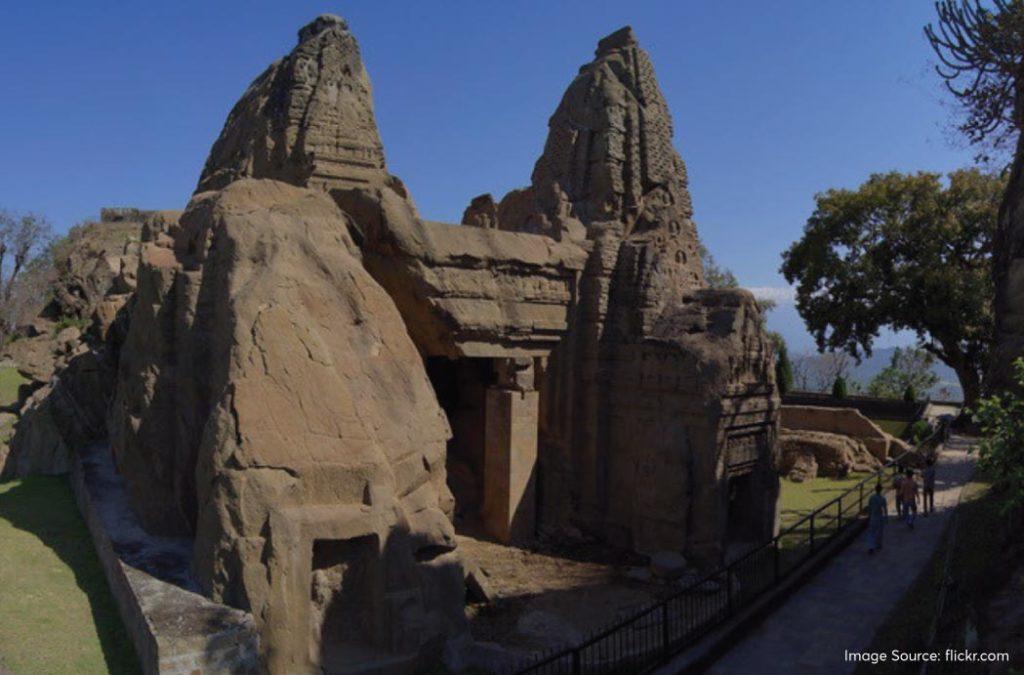
When the East India Company came to India, they started heritage preservations and spent their funds in archaeological surveys. The first known visits to the temple happened in 1887. Later in 1913, Henry Shuttleworth was the first person to mention Masroor Temple in his records and referred to it as a Hindu temple dedicated to ‘Vaishnavism’. He shared his findings with Harold Hargreaves, who was more aware of the Hindu Gods. Seeing the huge Shiva carving at the entrance, Harold thought the temple might not be dedicated to Lord Vishnu after all. The Kangra Earthquake in 1905 caused significant damage to Masroor Temple. Owing to its in-situ single rock construction, it remained intact unlike the other historical constructions in Himachal that crumbled under the force. However, the damage from wars and the natural calamity made it difficult to pinpoint its age.
Legends associated with Masroor Temple
The legends associated with the Masroor Temple are very fascinating and further create confusion around the origins of the monument complex. In Mahabharata, there is a mention of the ‘Jalandhar’ kingdom. This was also referred to as the ‘Tribhaga’ kingdom in a few scriptures. The Masroor Temple complex was believed to be a part of this kingdom. The renowned sage, Panini, also mentioned the Masroor Temple in his literary marvels.
Pandavas were the righteous warriors of the mythological tale, Mahabharata. It is believed that during their 13-year exile, they took shelter in the Masroor rock-cut complex. There is an unfinished stairway within the temple and the story associated with is very interesting. It is believed that the Pandavas decided to build a stairway to heaven and set a goal to complete it overnight and before the first light of dawn breaks. They began with their work. However, Indra, the king of Gods, feared that such a stairway would open easy access to heaven. This will even let the unworthy access the celestial plane. That is why he orchestrated a deceiving crow call before dawn and the Pandavas stopped their work thinking they couldn’t complete it before sunrise.
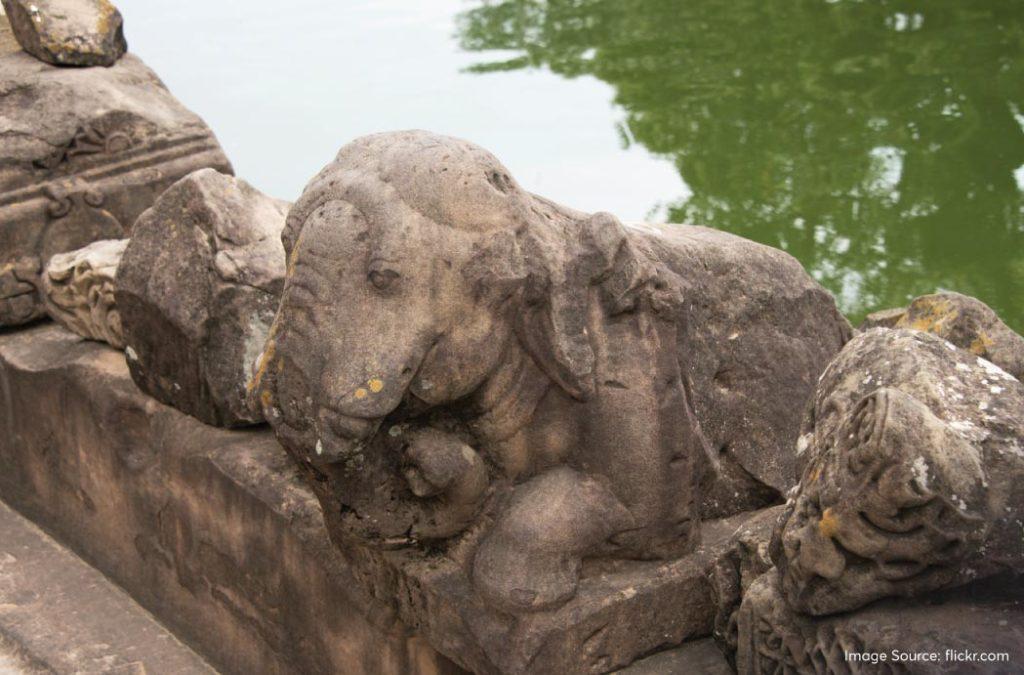
Some say that the Pandavas were the ones to start building this temple. However, they stopped abruptly when the locals noticed that the five men were none other than the royals of Hastinapur. It is said that the pond near the Masroor Temple was made specifically so that Draupadi, the wife of Pandavas, could take a bath every day.
Another legend tells us the story of Raja Yashovardhan who was said to have built the Masroor Temple and dedicated the same to Lord Shiva. There is a large figure of Lord Shiva in the entrance which provides a little authenticity to the story of the king.
While Masroor Temple is mysterious in its own way, Kinnaur Kailash is yet another mountain that is shrouded in mystery and mythology.
Religious significance of the place
The Masroor Temple in Himachal Pradesh has a huge Shiva sculpture carved out of stone at the entrance. Though part of it is in ruins, it is clear from the details that the Lord here is Shiva. Inside, the sanctum sanctorum houses Lord Ram, Lord Lakshman and Goddess Sita. People come here to offer their prayers and perform spiritual rituals.
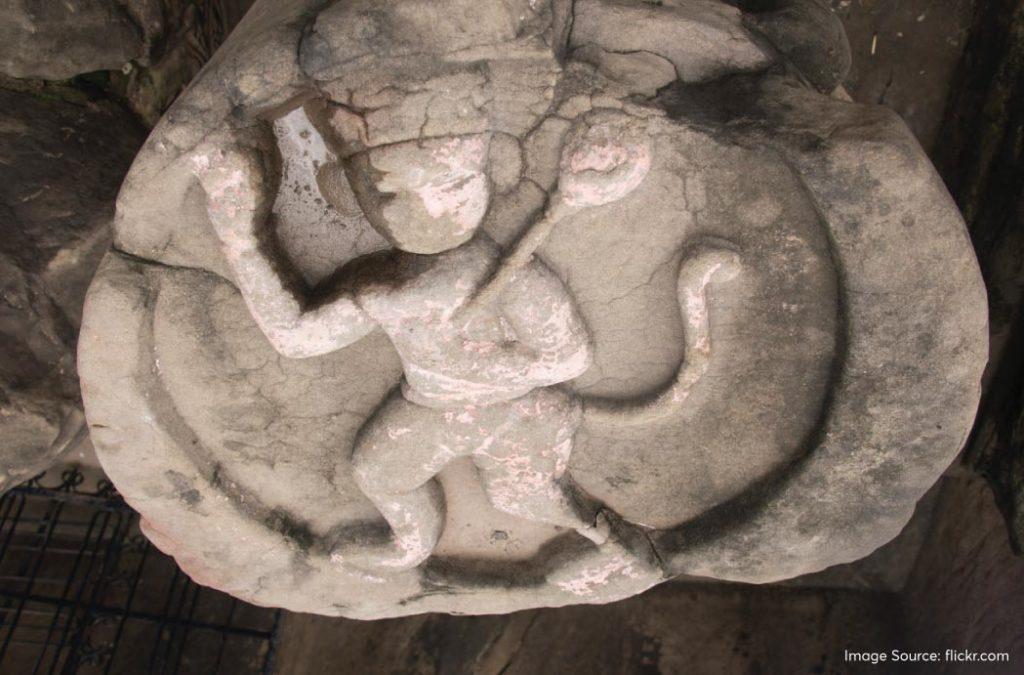
The iconography of the temple also shows the Shakti, Devi and Saura traditions of Hinduism. Records say that the Ram, Sita and Lakshman statues look relatively new and must have been established here during the 20th century.
Architecture of Masroor Temple
The spires of Masroor Temple look like they grew out of the natural rock of the mountain. In the case of the main sanctum, the rock was shaped to create a flat roof and a second level above that. This level blends with the main spire, also known as the Gopura or Shikara and the eight smaller shrines.
The temple originally had four entrances. The eastern entrance is complete, while the northern and southern ones are partially finished. The fourth entrance is mostly incomplete. Before the 1905 earthquake, the eastern entrance had a large hall or the Mandapa and a portico, which are now completely destroyed. This Mandapa had a thick roof and also a drainage system to remove the water that would accumulate during rainfall. The Mandapa also had stairs that led to an upper level. What’s special about this upper level is that it offered stunning views of the surrounding landscape and the Dhauladhar range, but these stairs were destroyed and are not accessible now. At one time, the temple had 13 or 15 spires that looked like they naturally emerged from the rock.
The entire complex is carved from a single sandstone rock. Certain portions of this sandstone rock were too hard to carve but the artists managed to do it. Owing to their hardness, these portions were able to sustain the test of time. The portions of the rock that were softer were the ones that wore away because of natural causes.
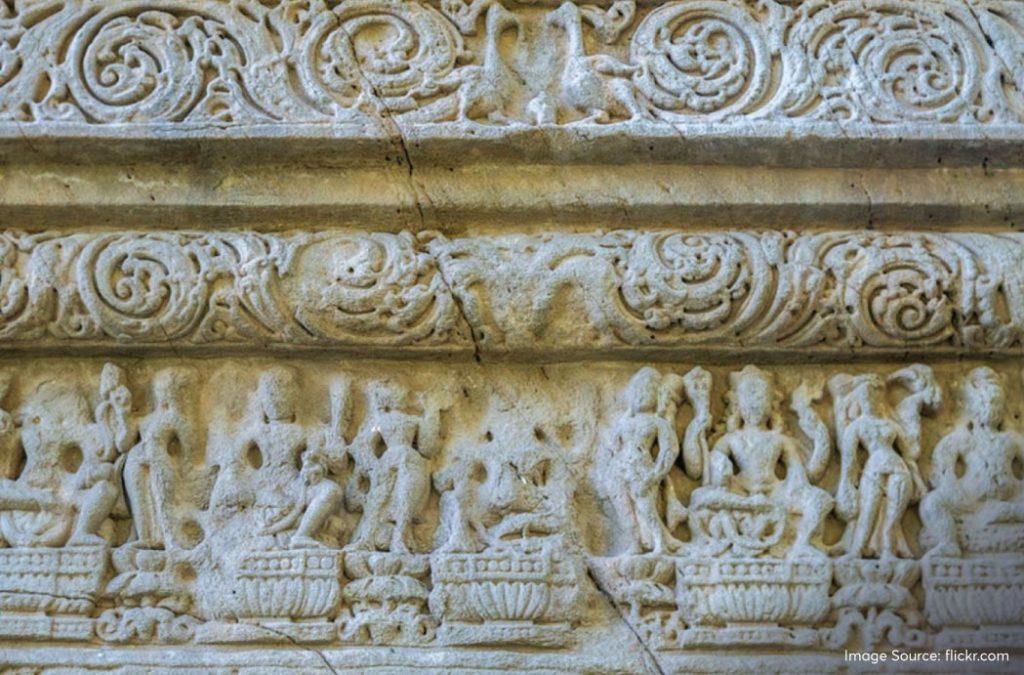
The temple has a sacred pool on the east side which is rectangular in shape. It measures 25 x 50 metres.
When you enter the temple complex, you will be passing through a series of mandapas and then a vestibule or the Antarala. In the main sanctum sanctorum, you will find sculptures of deities like – Shiva, Vishnu, Indra, Ganesha, Kartikeya, Durga Mata, Saraswati Devi, Surya Deva, Varaha and Narasimha avatars. In the ruins, archaeologists also found sculptures of Vedic deities like Varuna, the God of Rain and Agni, the God of Fire.
The presence of so many deities says that probably the ones who built the temple followed Henotheism, a practice of believing in one supreme God without opposing the possible existence of multiple deities and their worship.
If you love art and are also a nature lover, we suggest that you visit the Andretta Village in Himachal Pradesh which offers you the perfect blend of colours and stunning views of nature.
Entry fees and timings
It is absolutely free to enter Masroor Temple in Himachal Pradesh. You do not need any special permissions either. The temple remains open from 6:00 AM to 6:00 PM. However, there are certain things to keep in mind. No food is allowed inside the temple premises. You cannot sit down here to eat food or consume any drinks. Also, while cameras are allowed, you cannot use flash, especially to click the pictures of the deities.
Things to do at Masroor Temple
Here are some of the things that you can do at the Masroor Temple.
Take a dip in the sacred lake – The sacred lake near the temple is said to be from the Mahabharata. It is said that the water body has immense spiritual energy that cures ailments and refreshes one’s soul. It is considered very auspicious to take a dip here.
Perform circumambulation – Circumambulation or Pradikshina are a part of Hindu prayers. Going around the temple in a clockwise direction will help one absorb the positive vibrations and spiritual energy of the place.
Enjoy the picturesque views – The Masroor Temple offers picturesque views of the surrounding snow-capped mountains of the Dhauladhar mountain range and the dense vegetation around it. The peace and tranquillity that this place offers is unparalleled.
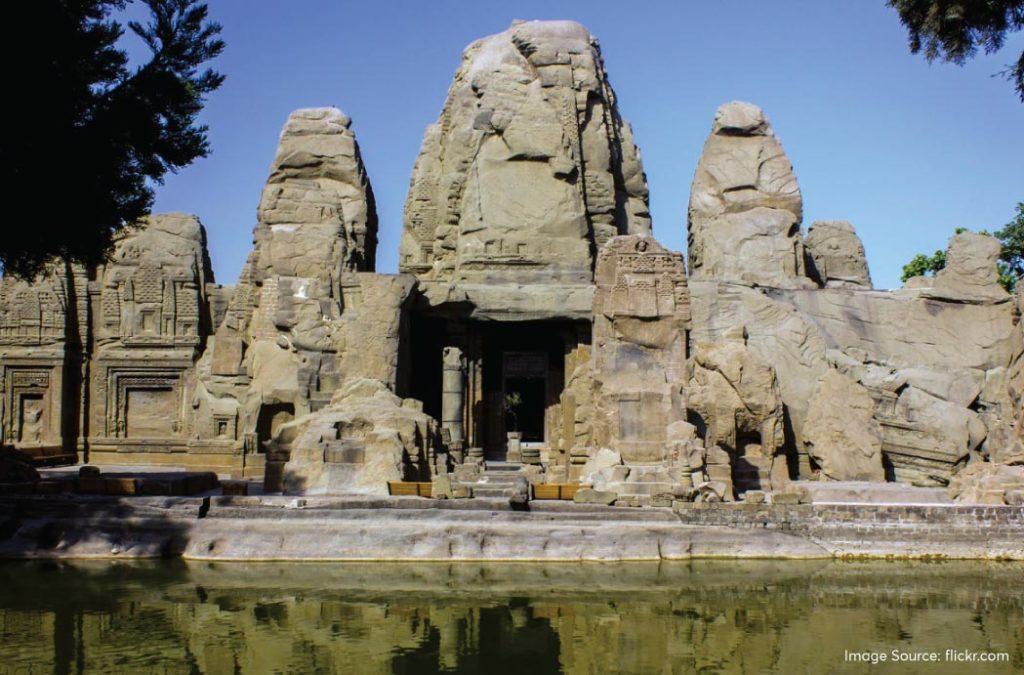
Meditation and reflection – The peaceful environment of the temple makes it an ideal place for meditation or quiet reflection. You can sit in a quiet spot and connect with the spiritual atmosphere of the site.
Photography – Use your smartphones or professional cameras to capture the beauty of the place! You can click pictures of yourself too, something that would sit well on your Instagram! However, remember to not use flash.
Talk to the locals – The locals around the temple have so much to say about the history of the place. Their stories can give you a better insight into the temple, how it came to be and its significance in the Hindu religion.
Best time to visit Masroor Temple
The Masroor Temple will be open all year round and you can come here anytime. Most people come here during the summer when the climate is ideal for outdoor sightseeing. The skies are clearer and the surrounding foliage is very vibrant. The view of the mountains is also stunning. But be prepared that there will be too much crowd here during the summer season.
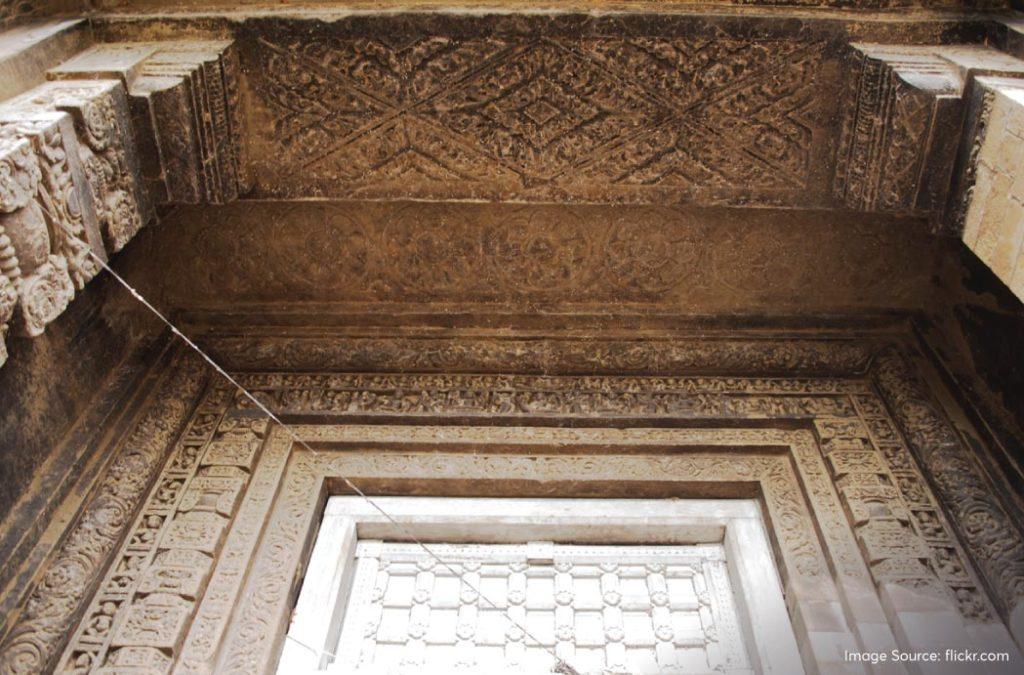
Winters are the off-peak season and the crowd will be significantly less. If you do not mind the low temperature, plan your trip during this time. Do not forget your layered clothing though! Most people avoid visiting the place in the monsoon season as the region experiences heavy rainfall and landslides are quite common.
How to reach Masroor Temple?
By Air
The nearest airport is the Gaggal Airport, which is also called the Kangra Airport. This is approximately 45 kms away from the Masroor Temple. You can find buses from Kangra to the temple or hire a shared taxi to reach the place.
By Rail
Pathankot Railway Station is the nearest rail route and you will find trains coming from Delhi, Amritsar, Jammu, Chandigarh, Jalandhar, Mumbai, Ahmedabad, Bhopal, Chennai and Bengaluru among other places in the country. You can take a bus or hire a taxi from the station to reach Masroor Temple.
By Road
There are regular bus services that will take you from Delhi, Chandigarh and Shimla to Kangra. From there, you can find buses or taxis to the temple. If you are on a road trip and are coming via Pathankot then you must stay on NH154. People coming via Dharamshala should stay on NH503.
After you are done with your trip to the Masroor Temple, we suggest that you also pay a visit to Dharamshala which is only 40 kms away from the shrines. The place is geographically blessed and has peaceful monasteries, trekking trails and even age-old churches!
Masroor Temple shows us the sheer brilliance of the artisans and craftsmen from an era where people knew very little about technology and yet they managed to build an entire temple complex from a single stone. It is worth your time to explore this architectural marvel and understand a little more about our culture and history.
